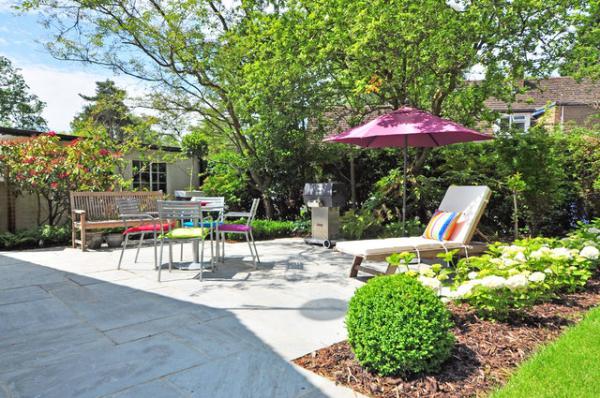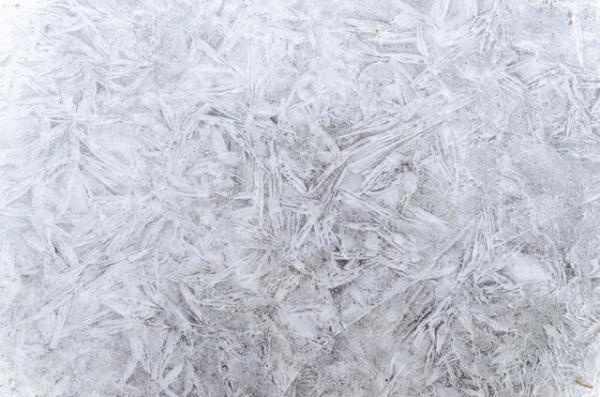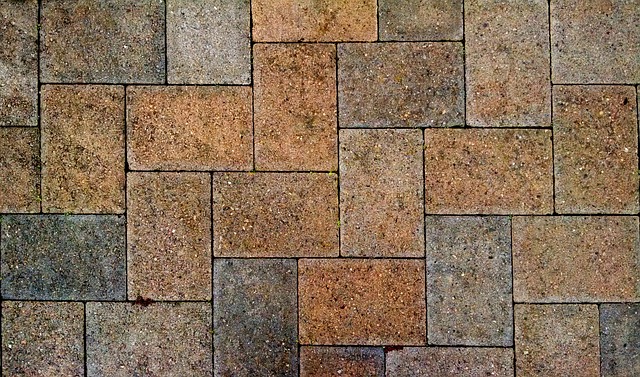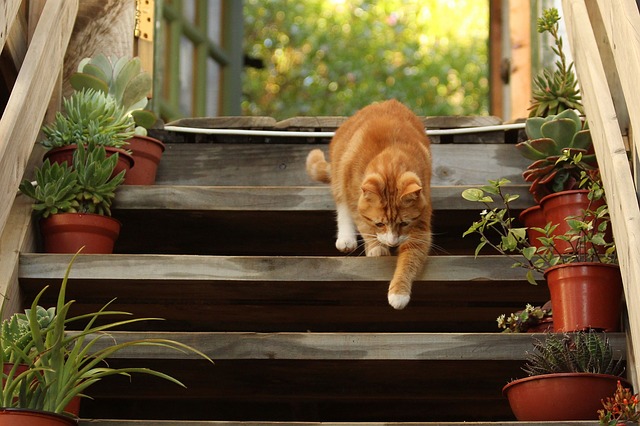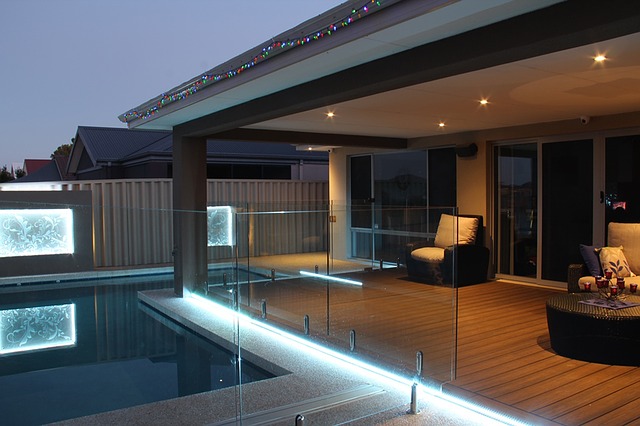Latest News from Water Solutions
Softscaping 101 From Your Denver Landscaping Experts
January 31, 2018
You’ve probably heard of hardscaping in the landscape world; meaning rocks, retaining walls, patios, etc. But, softscaping is a term that is used quite less frequently and as a result, many homeowners don’t know exactly what it is. You might think that “softscaping†deals with anything that is soft - but that’s not exactly true. Let your Denver landscaping professionals help you learn all about softscaping.
Softscape elements, like your plants and flowers, will be seasonal and require constant maintenance to keep them healthy and thriving, especially depending on the weather and seasons the Denver area faces.
Before you install softscape into your landscaping, remember to keep a budget in mind as this will determine what you will be able to put in your garden, and calculate the maintenance timeline for what greenery you choose. For example, if you choose to plant annuals they might have to be replaced each year. If you plan on putting in bushes or shrubs, those will have to be pruned frequently.
Water Solutions Company has been helping Denver area residents for over twenty years. Whether you’re in need of guidance on hardscaping or softscaping, you know who to call! Contact us today to see how we can help the yard you’ve always dreamed of!
Read More...
What Exactly Is Softscape?
Softscaping envelopes the living, horticultural elements of landscape design; simple put, it means plants. Softscape elements go hand in hand with hardscape elements, such as retaining walls, brick walkways, pergolas, and patios. All softscape isn’t technically “soft†because if you think about it, trees are a part of softscaping and they’re not exactly soft! Softscaping can also refer to upkeep duties such as weed/nuisance management, planting, mowing, trimming, aerating, spraying, and digging for everything from plants to shrubs. The tools that you’ll most often use for softscaping your yard would be wheelbarrows, rakes, shovels, picks, and gas powered tools. The main premise of softscaping is to give your yard, and landscaping, character. Softscaping creates an aura and ambience for your yard, and reflects the sensibilities of their inhabitants.Examples of Softscape
Because softscape refers to all plant life (including lawn grass), it means that even plants that some people might think of as weeds are still considered softscape. Annual plants, perennials, biennials, trees, shrubs, and vines, are all considered softscape plants.Advantages and Disadvantages
While you may think that softscaping is for the visual enhancement of landscaping only, you’re not entirely correct. Yes, shrubs, flowers, trees, and other plants add beautification to your yard, but they also serve a more important purpose. Softscaping is necessary to maintain the ecological balance of the natural environment, and works with hardscaping to prevent excess water absorption and gives neighbors and visitors a great perception of your yard space.Softscape elements, like your plants and flowers, will be seasonal and require constant maintenance to keep them healthy and thriving, especially depending on the weather and seasons the Denver area faces.
Before you install softscape into your landscaping, remember to keep a budget in mind as this will determine what you will be able to put in your garden, and calculate the maintenance timeline for what greenery you choose. For example, if you choose to plant annuals they might have to be replaced each year. If you plan on putting in bushes or shrubs, those will have to be pruned frequently.
Keep Your Proportions Right
Softscape allows homeowners to get their proportions right for their yard. Sometimes, hardscape features that are installed are too large compared to the beautiful softscape you bought and intend to install in your yard. This causes the entire environment to look bare and off putting. Make sure to keep symmetry and proportions in mind when you’re planning out your landscaping.Water Solutions Company has been helping Denver area residents for over twenty years. Whether you’re in need of guidance on hardscaping or softscaping, you know who to call! Contact us today to see how we can help the yard you’ve always dreamed of!
Denver Sprinkler Service: Your Guide to Winter Watering!
January 24, 2018
With the temperatures starting to drop and snowflakes start to fall around us, you might think that it’s time to stop watering completely. But, that’s not the case! Even though leaves start to fall and if it gets cold out, that doesn’t mean you can put away your hose or stop your irrigation system right then and there.
The fact of the matter is that you should continue watering your lawn, maybe not as often, but up until the ground temperature is below freezing. Once the weather starts to cool off, you’ll notice that your lawn will go into dormancy for the winter, meaning that it will stop growing. Your grass will start to change and will eventually stop once the first of the winter comes around. Due to these changes, you’ll need to change your watering frequency - it won’t be anything like it was in the fall, and completely different than what it was in the summer.
If you have an irrigation system, especially once that Water Solutions Company has installed, there’s a good chance you’ve been taking care of your lawn up until this point in time. That being said, one watering cycle a week will keep your grass in good shape. Keep reading to learn about the importance of winter watering from your Denver sprinkler experts!
Whether you’re anticipating a few snowflakes or a snowstorm, keep watering once a week until your ground is frozen. It’s pointless to water after that, because the frozen ground acts as a barrier blocking the water from going down to the roots. With a frozen ground, the roots of your grass are deprived of water, regardless of the amount of snow that’s fallen on top of it. If you know when your big freeze is going to happen, water your lawn the morning before the freeze happens. If the soil is moist, it will insulate your roots better than dry soil. Additionally, your roots are at risk of freezing even more if the soil is dry.
Questions about winter watering? Contact the experts! At Water Solutions Company, we have over two decades of experience working with sprinklers in the Denver area. Give us a call today or contact us for a free estimate for sprinkler installation and other sprinkling and landscaping services in the Denver Metro areas!
Read More...
The fact of the matter is that you should continue watering your lawn, maybe not as often, but up until the ground temperature is below freezing. Once the weather starts to cool off, you’ll notice that your lawn will go into dormancy for the winter, meaning that it will stop growing. Your grass will start to change and will eventually stop once the first of the winter comes around. Due to these changes, you’ll need to change your watering frequency - it won’t be anything like it was in the fall, and completely different than what it was in the summer.
If you have an irrigation system, especially once that Water Solutions Company has installed, there’s a good chance you’ve been taking care of your lawn up until this point in time. That being said, one watering cycle a week will keep your grass in good shape. Keep reading to learn about the importance of winter watering from your Denver sprinkler experts!
Frequency Of Watering
There really is no magic schedule of when you should water your lawn as soon as temperatures stop to drop. As mentioned before, for winter the frequency of watering should be once a week until the ground starts to freeze. Colder temperatures mean that water will not evaporate as quickly as it would in the summer or fall, so it’s important to remember to not overwater your lawn watering more than once a week! Look to your grass for signs that it need watering. The blades will fold in half and begin to appear a bluish gray color when it’s thirsty. Another way to tell is by taking a walk on your lawn. If you can see your footprints long after you’ve walked in it, your lawn is good to go on moisture.Whether you’re anticipating a few snowflakes or a snowstorm, keep watering once a week until your ground is frozen. It’s pointless to water after that, because the frozen ground acts as a barrier blocking the water from going down to the roots. With a frozen ground, the roots of your grass are deprived of water, regardless of the amount of snow that’s fallen on top of it. If you know when your big freeze is going to happen, water your lawn the morning before the freeze happens. If the soil is moist, it will insulate your roots better than dry soil. Additionally, your roots are at risk of freezing even more if the soil is dry.
Questions about winter watering? Contact the experts! At Water Solutions Company, we have over two decades of experience working with sprinklers in the Denver area. Give us a call today or contact us for a free estimate for sprinkler installation and other sprinkling and landscaping services in the Denver Metro areas!
Hardscaping 101 From Your Denver Landscaping Service
January 17, 2018
Hardscaping has become a big landscaping trend in recent years, especially for areas affected by droughts and have restricted water use. Residents in these areas had to pause and rethink how their landscaping should work without being able to water so much. Instead of letting landscaping dry out and die, leaving an unpleasant looking yard, a lot of people are implementing hardscape into their landscaping. What exactly is hardscape? Keep reading to find out!
Hardscaping not only beautify your outdoor landscaping, but also makes it more livable. You can use hardscaping to enhance privacy, creating boundaries, leveling out the yard, providing shelter, and depending on your preference, reduces lawn maintenance. Fences and walls can be used to divide up your yard for different purposes. Vegetable gardens thrive in hard surfaces, but you might still want some grassy area for pets, children, or just for eye appeal.
Does your yard have a steep or awkward hill, making it almost seemingly impossible to use? Depending on how steep the slope is, you can install a retaining wall to correct it. Retaining walls all serve the same purpose, regardless of the style. They hold back sections of soil so you can separate flat areas of your yard, and they also prevent soil erosion.
Hardscaping is also used to provide shelter for you and your friends and family. Gazebos? Those are technically hardscaping, as well as overhangs, which are two examples of hardscaping that will allow you to get out in the great outdoors and use your yard more! They provide shelter from rain, or provide shade during the hot, sunny, summer days.
Do you hate mowing the lawn week after week? Well, if the answer is “yesâ€, hardscaping is for you! Hardscaping cuts down on mowing the lawn and yard maintenance significantly. Paving walkways and laying down rocks instead of grass will greatly reduce the amount of grass in your lawn to little or nothing at all, providing an incredibly low-maintenance yard.
Finally, even some water features can be considered hardscaping. The types of fountains that feature hardscaping are stone fountains, ceramic fountains, DIY fountains, and clay pot fountains.
Before you go to your local hardware store and purchase a ton of rocks, it’s important to consider the functions of hardscaping and to talk to the professionals. At Water Solutions Company, we’re your go-to landscaping professionals in the Denver area! For twenty-two years and counting, we’ve been providing the best sprinkler and landscaping services. Our main specialities include sprinkler installation, eco-friendly landscaping and design, sprinkler blowouts, and other routine maintenance. Give us a call today!
Read More...
All About Hardscape
Hardscaping deals with non plant design elements of landscaping, such as paved walkways, walls, patios, fences, lawn ornaments, and especially rocks. As one of the foundations and anchors of a landscaping plan, hardscaping should be planned and implemented before your start softscaping (which is all of your greenery you want to add). Hardscaping provides continuity from your home’s interior to yard, then from your yard to surrounding landscape.Hardscaping not only beautify your outdoor landscaping, but also makes it more livable. You can use hardscaping to enhance privacy, creating boundaries, leveling out the yard, providing shelter, and depending on your preference, reduces lawn maintenance. Fences and walls can be used to divide up your yard for different purposes. Vegetable gardens thrive in hard surfaces, but you might still want some grassy area for pets, children, or just for eye appeal.
Does your yard have a steep or awkward hill, making it almost seemingly impossible to use? Depending on how steep the slope is, you can install a retaining wall to correct it. Retaining walls all serve the same purpose, regardless of the style. They hold back sections of soil so you can separate flat areas of your yard, and they also prevent soil erosion.
Hardscaping is also used to provide shelter for you and your friends and family. Gazebos? Those are technically hardscaping, as well as overhangs, which are two examples of hardscaping that will allow you to get out in the great outdoors and use your yard more! They provide shelter from rain, or provide shade during the hot, sunny, summer days.
Do you hate mowing the lawn week after week? Well, if the answer is “yesâ€, hardscaping is for you! Hardscaping cuts down on mowing the lawn and yard maintenance significantly. Paving walkways and laying down rocks instead of grass will greatly reduce the amount of grass in your lawn to little or nothing at all, providing an incredibly low-maintenance yard.
Finally, even some water features can be considered hardscaping. The types of fountains that feature hardscaping are stone fountains, ceramic fountains, DIY fountains, and clay pot fountains.
Before you go to your local hardware store and purchase a ton of rocks, it’s important to consider the functions of hardscaping and to talk to the professionals. At Water Solutions Company, we’re your go-to landscaping professionals in the Denver area! For twenty-two years and counting, we’ve been providing the best sprinkler and landscaping services. Our main specialities include sprinkler installation, eco-friendly landscaping and design, sprinkler blowouts, and other routine maintenance. Give us a call today!
Denver Landscaping Company: Tips for Installing Stairs In Your landscaping
January 10, 2018
When you have a slope in your back or front yard, you’ve got to do something with it to make it easier to navigate your landscaping. What can you install? Stairs! Stairs are the perfect accompaniment for slopes anywhere in your yard, and allow you to even add fun other landscaping features like retaining walls and fire pits. You’ll want to consult a professional landscaping company, such as Water Solutions, to help you install stairs in your landscaping because it can be very tricky. However, keep reading below for a general understanding of the stair installation process from your Denver landscaping company!
If you’re looking to use wood rather than masonry materials, remember that while they are generally less time consuming compared to masonry, they also have a much shorter lifespan. Landscape timbers and railroad ties are popular choices, can be inexpensive, and come already cut in the perfect dimensions for steps. There are several factors to consider when choosing materials for outdoor stairs.
Ready to install stairs and steps in your landscaping? Give your Denver landscaping experts a call! Contact Water Solutions Company today for a free project estimates!
Read More...
The Installation Process
When it comes to planning to install steps and stairs in your landscaping, start with a plan. Then, you’ll always start building steps at the bottom of your slope and work up the hill. Additionally, steps can never be built on loose topsoil. They need to be installed on a compacted base material. In the installation process, landscaping experts will excavate the topsoil all the way down to a firm subsoil layer. Then, the shape of your steps will be cut directly into the soil. From there, the process will depend on the type of masonry material you have decided to use.Masonry Materials
Depending on whether you want to install steps in your backyard hill, or if you want to install front porch steps, the masonry material matters. For front porch steps, garage steps, or any type of step you’ll be walking and relying on every day, interlocking concrete blocks are typically the material of choice. These blocks are efficient and are a very straightforward install. They also come in several colors and textures to match your existing landscaping theme or home color. You can also use these blocks for retaining walls, making it a seamless transition from steps to walls. For backyard hills you want to install steps on, the masonry material used can be brick, natural stone, concrete blocks, or even poured cement.If you’re looking to use wood rather than masonry materials, remember that while they are generally less time consuming compared to masonry, they also have a much shorter lifespan. Landscape timbers and railroad ties are popular choices, can be inexpensive, and come already cut in the perfect dimensions for steps. There are several factors to consider when choosing materials for outdoor stairs.
Dimensions
For the standard rise of a landscape step, experts typically use six inches with a run of at least fifteen inches. Remember to keep your rises and runs consistent throughout your step construction so you prevent people from tripping and falling. Additionally, think about how wide you want your stairway to be. Typically, at the very minimum three feet is comfortable enough for one person, but if you want to allow enough room for two people to walk side by side, make sure the width is between five to six feet. The wider the stairway the more dramatic of an effect it gives.Ready to install stairs and steps in your landscaping? Give your Denver landscaping experts a call! Contact Water Solutions Company today for a free project estimates!
Denver Landscaping Specialists: The Dos and Don’ts of Outdoor Lighting
January 3, 2018
Lighting can really make a room, including outdoor lighting. When it comes to having outdoor lighting and on the exterior of your home, a well-lit area increases security but really enhances your curb appeal. Outdoor lighting makes your home welcoming and friendly to guests and neighbors. Backyard spaces are no exception to outdoor lighting, either. But before you go out and purchase a bunch of lights, be sure to know the do’s and don’ts of outdoor lighting from your Denver landscaping service!
When it comes to your deck and patio, space out the light sources. Adding more smaller fixtures with a low, ambient wattage of light will look better than have just one large, bright bulb.
For your driveway, be sure to use lanterns on posts. If you have a long driveway and your front door light or garage lighting doesn’t extend the driveway path, add post lanterns as an additional way to greet visitors (and make sure no one trips or stumbles in the dark).
Go with LED fixtures and bulbs. LED bulbs use less energy than regular bulbs, last a LOT longer, and come in a variety of color temperatures. Old variations of LED bulbs only gave off a bluish, cool light, but new variations come in warmer temperatures that give off yellow light. You can also choose from clear finishes or frosted. These new color schemes will still help you achieve whatever look you’re going for but also save you energy and money!
Mount your lights slightly above eye level on walls. Generally, 66†is what landscapers recommend when it comes to the front of your house.
Finally, be sure you find a quality line of lighting fixtures so that they come with a warranty and will last for years. The last thing you want to do is spend time to install fixtures only to have them break or rust after one season’s use.
One of the most common mistakes that homeowners make when purchasing outdoor lighting is choosing lighting fixtures that are too small for the space. Your front door is the only place outside that should have a large and ornate fixture, because it’s the focal point for the home. Outside of the front door, avoid using very large fixtures that will create one large lighting focal point that can come off as too harsh. Use multiple small fixtures that make your outdoor space more ambient and relaxing for you and your guests.
While we recommend using smaller features for your outdoor area, don’t use a small fixture for your back door. Don’t use the same one as your front door, but keep it large so it matches the home’s lighting but avoid making it small. This is also important for safety reasons.
For the best landscaping help in Denver, call Water Solutions Company! Our experts have years of experience with outdoor lighting! Contact us today for a free estimate for all of your landscaping and irrigation system needs!
Read More...
DOS
Choose fixtures that match or complement your home’s color scheme. If you’re wanting a color that goes with most colors, choose black finishes because it’s appropriate for all color schemes. White finishes work well with houses that have white trim and darker bodies. Bronze finishes go best with homes that have an earth tone color scheme or brown accents.When it comes to your deck and patio, space out the light sources. Adding more smaller fixtures with a low, ambient wattage of light will look better than have just one large, bright bulb.
For your driveway, be sure to use lanterns on posts. If you have a long driveway and your front door light or garage lighting doesn’t extend the driveway path, add post lanterns as an additional way to greet visitors (and make sure no one trips or stumbles in the dark).
Go with LED fixtures and bulbs. LED bulbs use less energy than regular bulbs, last a LOT longer, and come in a variety of color temperatures. Old variations of LED bulbs only gave off a bluish, cool light, but new variations come in warmer temperatures that give off yellow light. You can also choose from clear finishes or frosted. These new color schemes will still help you achieve whatever look you’re going for but also save you energy and money!
Mount your lights slightly above eye level on walls. Generally, 66†is what landscapers recommend when it comes to the front of your house.
Finally, be sure you find a quality line of lighting fixtures so that they come with a warranty and will last for years. The last thing you want to do is spend time to install fixtures only to have them break or rust after one season’s use.
DON’TS
One of the main “Don’t†of outdoor lighting is to avoid using light bulbs that have way too high of a wattage. The best wattage for outdoor lighting is between 40 and 75 watts. Most fixtures will give you a recommended wattage which will be appropriate. Never use more wattage than what you need because it will create glare and harsh lighting that’s not very welcoming for your guests and neighbors.One of the most common mistakes that homeowners make when purchasing outdoor lighting is choosing lighting fixtures that are too small for the space. Your front door is the only place outside that should have a large and ornate fixture, because it’s the focal point for the home. Outside of the front door, avoid using very large fixtures that will create one large lighting focal point that can come off as too harsh. Use multiple small fixtures that make your outdoor space more ambient and relaxing for you and your guests.
While we recommend using smaller features for your outdoor area, don’t use a small fixture for your back door. Don’t use the same one as your front door, but keep it large so it matches the home’s lighting but avoid making it small. This is also important for safety reasons.
For the best landscaping help in Denver, call Water Solutions Company! Our experts have years of experience with outdoor lighting! Contact us today for a free estimate for all of your landscaping and irrigation system needs!
